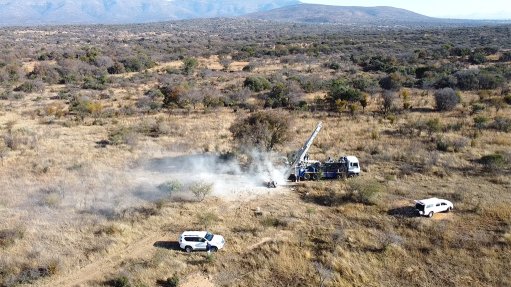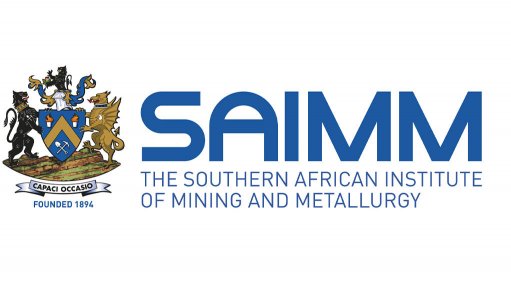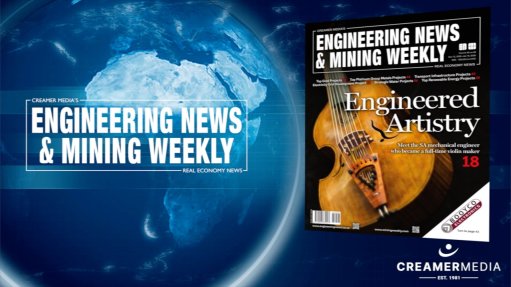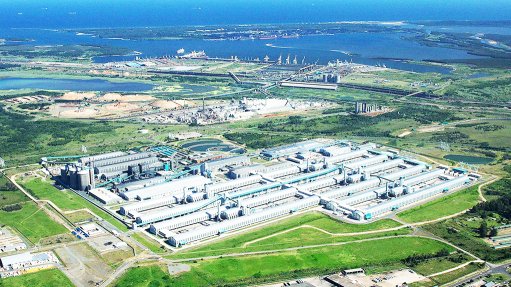Central bank gold reserves surge amid global uncertainty, survey reveals
Central banks have accumulated more than 1 000 t of gold in each of the last three years, up significantly from the 400 t to 500 t average over the preceding decade, according to the World Gold Council’s (WGC’s) ‘2025 Central Bank Gold Reserves’ (CBGR) survey, conducted between February 25 and May 20.
The WGC stated on June 17 that this marked increase in the rate of gold accumulation had taken place amid an environment of heightened geopolitical and economic uncertainty. This uncertainty had complicated the outlook for reserve managers and investors.
According to the survey’s findings, central banks continued to maintain favourable views on gold, consistent with results from previous surveys.
An overwhelming majority of 95% of respondents believed that global central bank gold reserves would increase in the coming 12 months.
Additionally, a record 43% of respondents indicated that they expected their own gold reserves to rise during the same period. No respondents indicated an expectation that their gold holdings would decrease.
“Central banks increasingly view gold as an important strategic asset within their reserve portfolios. Ongoing economic and geopolitical uncertainty continues to weigh on reserve managers, as this year’s findings highlight.
“Concerns over the inflation outlook and potential trade conflicts, particularly among emerging markets and developing economies (EMDE) banks, show that diversification and risk mitigation continue to be key drivers of strategic reserve management decisions,” the WGC said.
The report also noted that the motivation for increased gold allocations remained grounded in consistent themes. These included gold’s historically strong performance during crises, its value as a tool for portfolio diversification and its use as a hedge against inflation.
According to the WGC, respondents reiterated the strategic nature of gold as an asset, pointing to its capacity to act as a store of value and an effective diversifier.
A majority of respondents, measured at 73%, projected that the global proportion of dollar holdings within central bank reserves would moderately or significantly decline over the next five years.
In contrast, the proportion of reserves held in alternative currencies, including the euro and renminbi, along with gold, was expected to increase during the same timeframe.
“While there are divergences between advanced economy and EMDE central banks on some aspects, they share a common confidence in gold’s role as a reliable store of wealth and a key component of long-term reserve management strategies,” the WGC said.
The survey also identified a notable increase in the share of central banks that actively managed their gold reserves. This proportion rose from 37% in 2024 to 44% this year.
While the primary motivation for active gold management remained the enhancement of returns, risk management was cited more frequently than tactical trading, rising to become the second most common reason.
Regarding storage practices, the Bank of England continued to be the most widely used facility for vaulting gold reserves, with 64% of respondents reporting the use of its services. There was also a notable increase in the proportion of central banks storing gold domestically, with 59% doing so in 2025 compared to 41% in 2024.
Despite this increase, however, only 7% of respondents stated that they planned to increase their level of domestic storage over the next 12 months.
“As the world becomes increasingly volatile and unpredictable, gold’s safety, liquidity and return characteristics – the three key investment objectives for central banks – have risen in importance. The trends uncovered in our survey suggest that central banks continue to recognise the benefits of an allocation to gold, and indicate that their demand for gold will likely remain healthy for the foreseeable future,” the WGC said.
Article Enquiry
Email Article
Save Article
Feedback
To advertise email advertising@creamermedia.co.za or click here
Press Office
Announcements
What's On
Subscribe to improve your user experience...
Option 1 (equivalent of R125 a month):
Receive a weekly copy of Creamer Media's Engineering News & Mining Weekly magazine
(print copy for those in South Africa and e-magazine for those outside of South Africa)
Receive daily email newsletters
Access to full search results
Access archive of magazine back copies
Access to Projects in Progress
Access to ONE Research Report of your choice in PDF format
Option 2 (equivalent of R375 a month):
All benefits from Option 1
PLUS
Access to Creamer Media's Research Channel Africa for ALL Research Reports, in PDF format, on various industrial and mining sectors
including Electricity; Water; Energy Transition; Hydrogen; Roads, Rail and Ports; Coal; Gold; Platinum; Battery Metals; etc.
Already a subscriber?
Forgotten your password?
Receive weekly copy of Creamer Media's Engineering News & Mining Weekly magazine (print copy for those in South Africa and e-magazine for those outside of South Africa)
➕
Recieve daily email newsletters
➕
Access to full search results
➕
Access archive of magazine back copies
➕
Access to Projects in Progress
➕
Access to ONE Research Report of your choice in PDF format
RESEARCH CHANNEL AFRICA
R4500 (equivalent of R375 a month)
SUBSCRIBEAll benefits from Option 1
➕
Access to Creamer Media's Research Channel Africa for ALL Research Reports on various industrial and mining sectors, in PDF format, including on:
Electricity
➕
Water
➕
Energy Transition
➕
Hydrogen
➕
Roads, Rail and Ports
➕
Coal
➕
Gold
➕
Platinum
➕
Battery Metals
➕
etc.
Receive all benefits from Option 1 or Option 2 delivered to numerous people at your company
➕
Multiple User names and Passwords for simultaneous log-ins
➕
Intranet integration access to all in your organisation

















